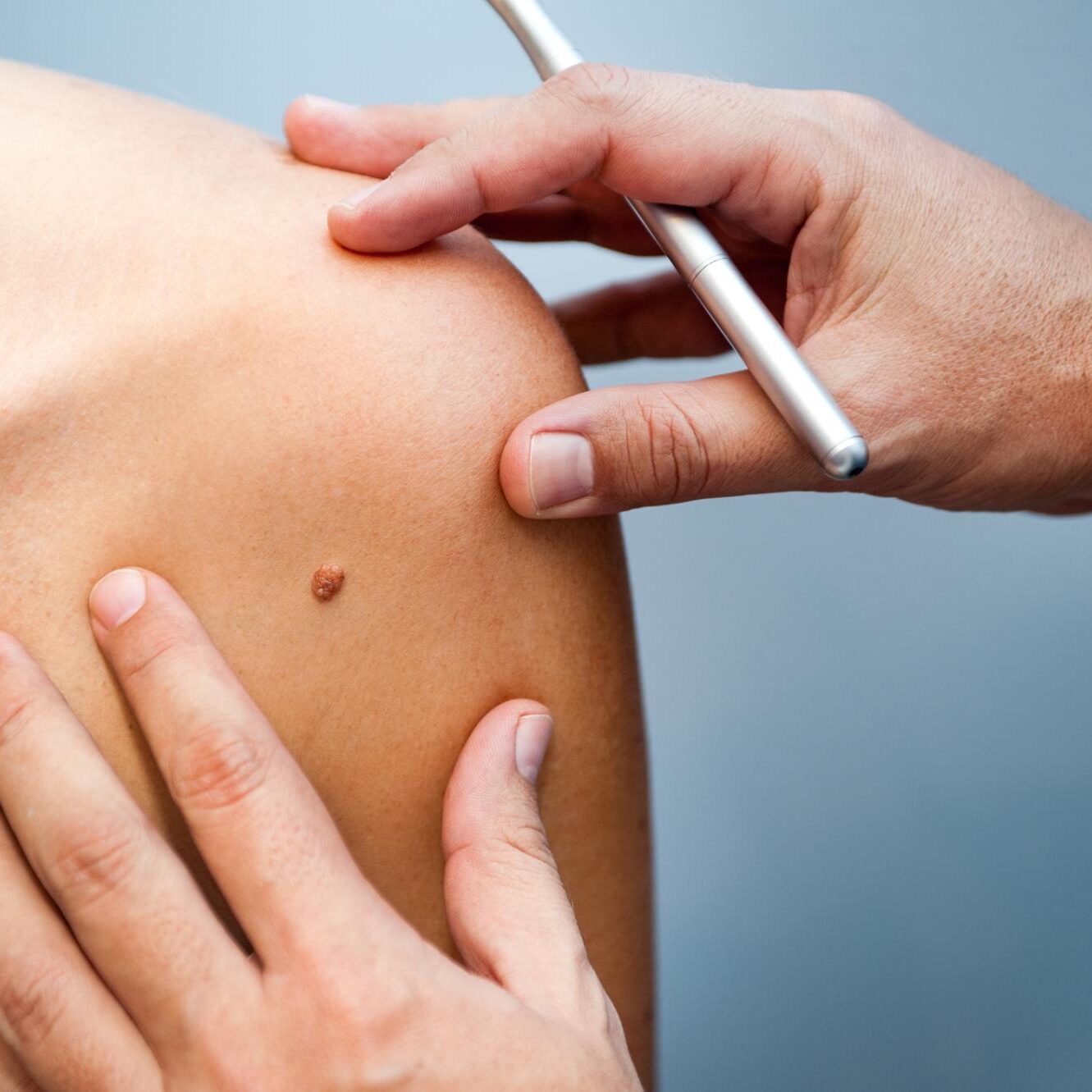What Are Moles?
Moles are caused when cells in the skin (melanocytes) grow in clusters or clumps. Melanocytes are distributed throughout your skin and produce melanin, which is the pigment that gives your skin color.
This ABCDE guide can help you determine if a mole or a spot may indicate melanoma or other skin cancers:
- A is for asymmetrical shape. One half is unlike the other half.
- B is for border. Look for moles with irregular, notched or scalloped borders.
- C is for color. Look for growths that have changed color, have many colors or have uneven color.
- D is for diameter. Look for new growth in a mole larger than 1/4 inch (about 6 millimeters).
- E is for evolving. Watch for moles that change in size, shape, color or height, especially if part or all of a mole turns black. Moles may also evolve to develop new signs and symptoms, such as itchiness or bleeding.

Mole Treatment
What to Expect
Watch for any changes that occur with your moles as they can have a risk of melanoma. You also need to take note of the current moles on your body, so you can continue to keep an eye out for any changes that may occur.
Annual skin exams with your dermatologist are very important as well. After our doctors have diagnosed the condition of your moles, we’ll develop a personalized treatment plan to provide you with the care you need.
